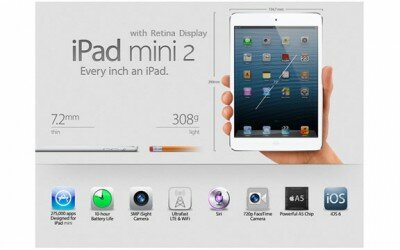iPad Mini 2 and iWatch Could Feature A New Type Of Dynamic Bezel

Recent rumors claim that the iWatch and the iPad Mini2 could be sporting dynamic bezels to extend the the display and make them an appropriate solution for small handsets.
The main news is that Apple has recently filled a patent regarding the display technology of the iWatch and the iPad Mini 2. According to the filling, the two devices might come out sporting bezels.
This Apple patent filling is published on the USPTO patent site and pictures the technology referring to an electronic handset with screen using a touch sensitive user interface. Below you can see how the invention is pictured.
The filling describes a method for using a handset which has a screen split in two: the first portion is not covered at all by a bezel and the second one which is half covered by a bezel which can transmit the light. The method is described as it follows: A sensor can detect when someone is close to touching the bezel, or actually touching it and it can perform a control function when the user is touching the bezel. The control function should cause the other portion of the screen to light up and modify the appearance of the bezel which covers the second portion.
The method presented above consists of the sensor to detect if an user is in the proximity of the screen, but hasn’t touched it yet nor it is close to touch the bezel. At this point, the appearance of the second screen section is adjusted so that it would be obvious what control function could be performed at the moment when the user touches the bezel, and is then operating the procedure of detecting and executing.
As explained above, the method is further pictured with visual content appearing on the first section of the screen, as a reaction to the detection.
According to the above mentioned method, the action will further consist in the modification of the surface placed in that section of the screen so that it would point out the suggestion that the control function could be executed by simply touching the bezel, in a moment when the sensor hasn’t detected the user touching the bezel or is having the intention of touching it in a pre-established time frame, after it has sensed the user.
The first method presented can be further comprised in establishing which side of multiple sections of the bezel will be touched by the user, or is close to being touched. Thusly, a control function could be selected from multiple control functions which are based on the determination.
In essence, this kind of technology can detect when the user’s finger is getting close to the bezel and it can expand the display in a contextual manner, according to what you want your handset to do next. One of the interesting terms, is that such tiny handsets are manufactured to be held with some of your hand on the bezel, for instance the iPad Mini which has a very small bezel, so the filling would stop the handset from displaying any hidden part of the handset.As an example, if the user is simply resting its finger on the device’s bezel, then this action will not modify what has been displayed. The filling has as inventors, Michael J. Telek, Jerald J. Muszak, Michael E. Miller and it was subscribed in 2012, on the 13th of September. The bottom line is that this technology allows the bezel , or other sections of the handset to use the free space as a screen extension and might even be used on the next iPhone, now more than ever because as we know Apple is on the verge of assembling a smaller iPhone device.











